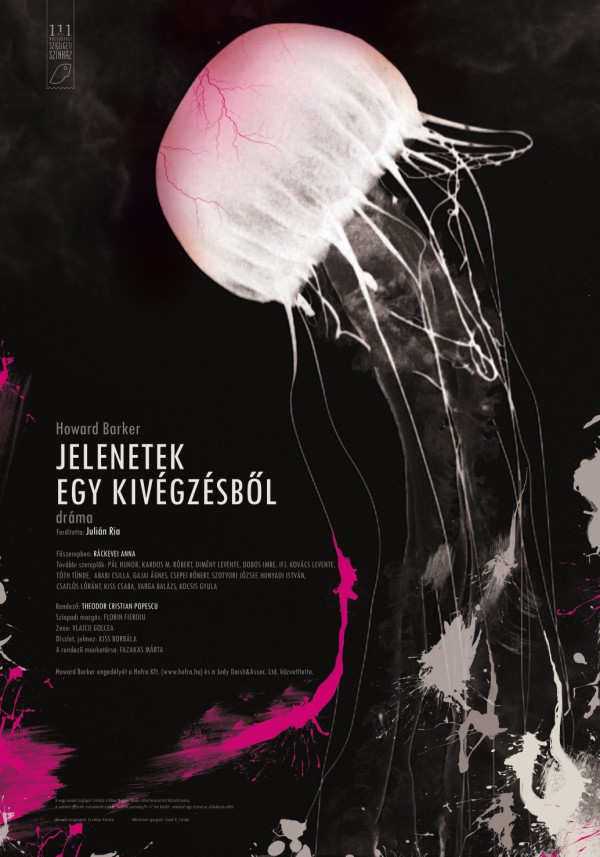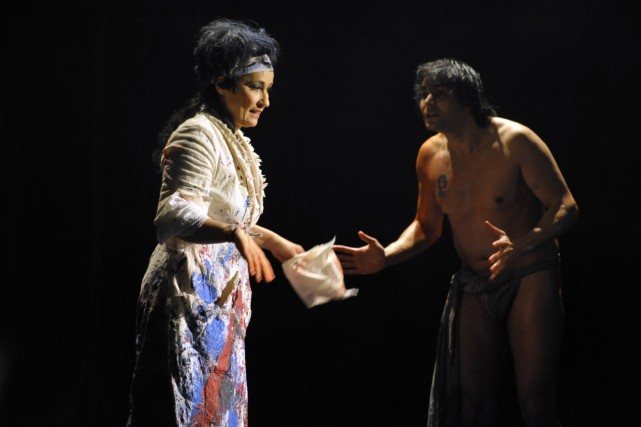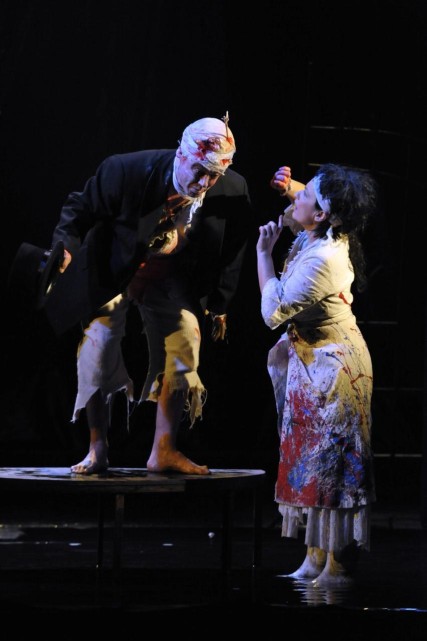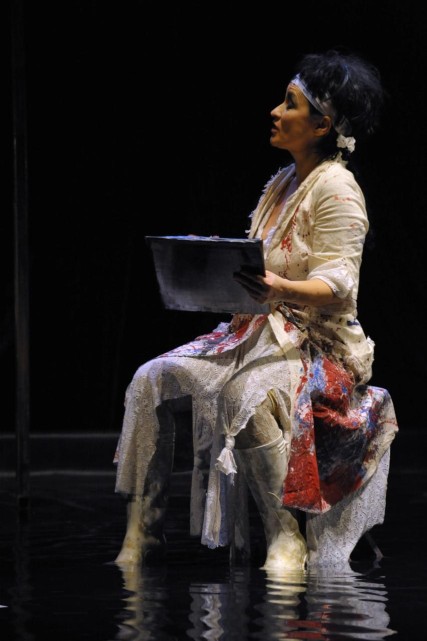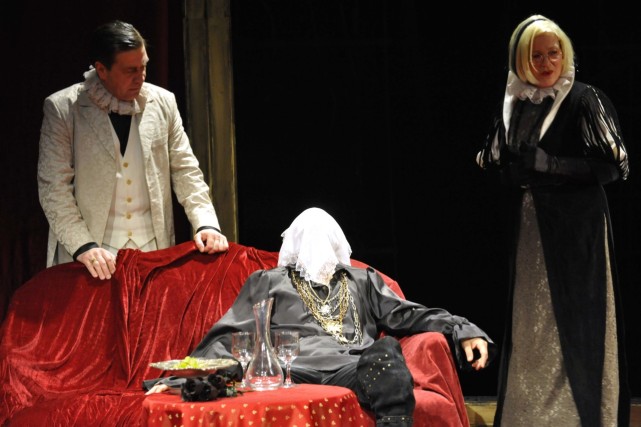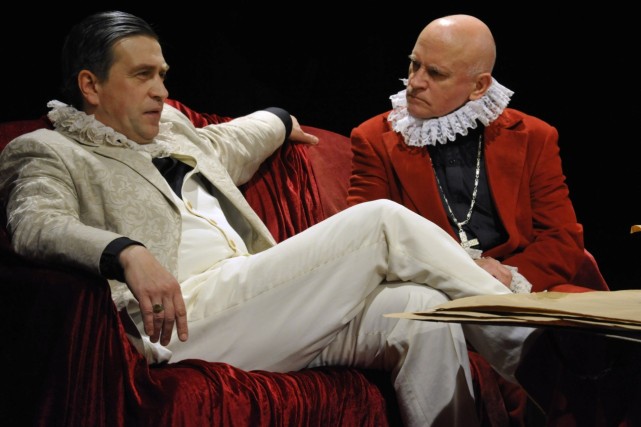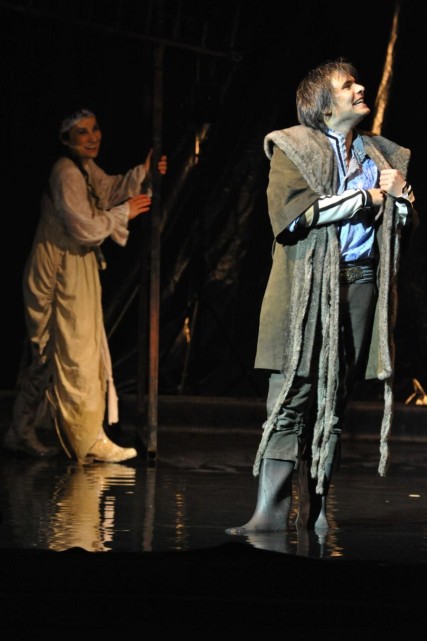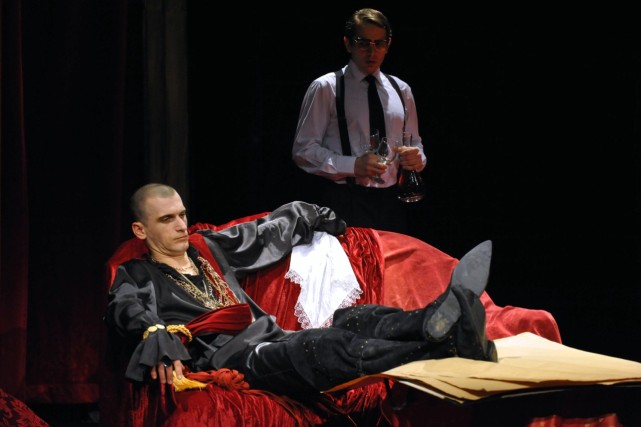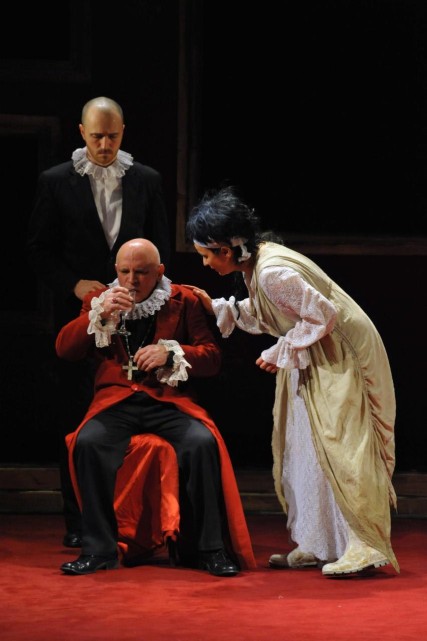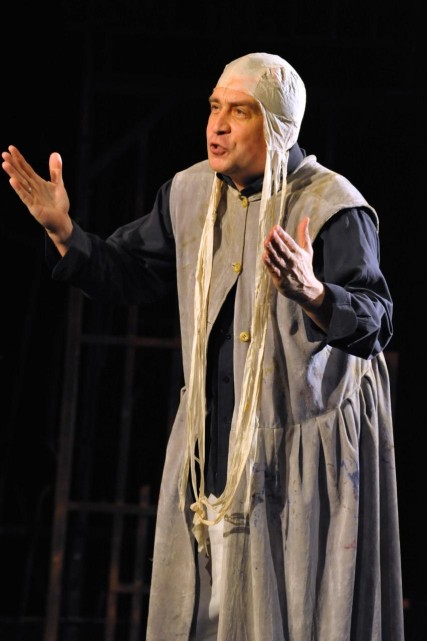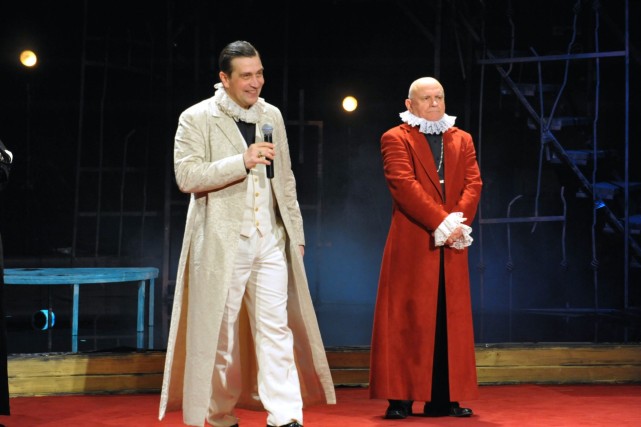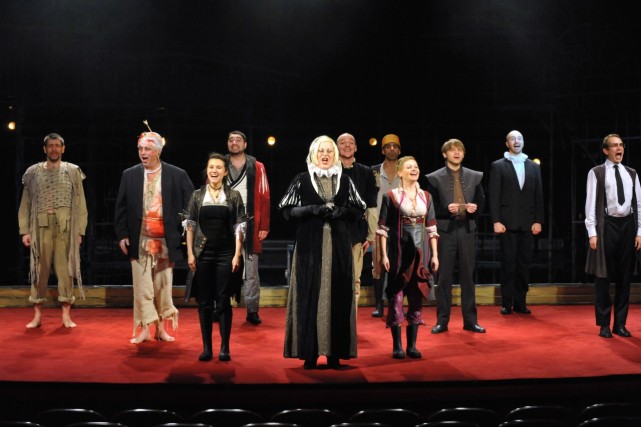Performances / Szigligeti Company / 2024-2025
Howard Barker
Scenes from an execution
drama
Translated by::
Howard Barker (1946–) is one of the most significant contemporary playwrights, an author encircled by an almost cult-like enthusiasm. This aspect is well shown by the fact that in his hometown, London, a company was established, called The Wrestling School, based on his specific perception about theatre. The company aspires to explore the system of connections between language, performer and receiver. Szigligeti Theatre presents his drama Scenes from an Execution on the 2nd of March, directed by Theodor-Cristian Popescu.
Theatre of Catastrophe
Barker has come up with the idea of so-called Theatre of Catastrophe. In his work, violence, sexuality, the desire for power and the problem of human behaviour are frequent themes. He rejects opinions according to which all members of the audience should get one collective answer after a play, based on what they had seen on the stage. Barker's goal is just the opposite: to dismember that one possible answer, to encourage the viewer to tackle the play on his or her own. To him, theatre is not a space of community experience. “The fact that we sing together, hum commonplace melodies together doesn't mean we are a community.” While some playwrights struggle to simplify their scenes, Barker strives to make his messages as complex as possible, ambiguous even. The popularity of comedy comes from the fact that it unifies its audience in a “consensual understanding”. Barker, on the other hand, believes in the revival of tragedy: he thinks the goal of theatre is to shed light on the differences, to cause problems, to make audence members leave the theatre disturbed and divided. This revival of tragedy can help beauty and poetry appear on the stage. “Tragedy liberates language from mediocrity, so that poetry can once again be spoken” - he says.
The empire and the artist
The central character of the drama Scenes from an Execution is Galactia, a Venetian paintress, who is commissioned by the doge to portray the Battle of Lepanto. (1571 – one of the famous naval battles of the wars against the Ottoman Empire, in the course of which the coalition of the Republic of Venice, the Papal State led by Pope Pius V., Spain, the Republic of Genoa, the Duchy of Savoy and the Knights of Malta struck the decisive blow against the Ottoman fleet). But Galactia is an autonomous artist, who sees the “glorious victory” as a horrible massacre, and portrays it as such. The procurers consider the picture an “intentional, obscene provocation”. Galactia is sent to prison and his lover, Carpeta is entrusted to create a “counter-painting”. “The state orders works of art. How much freedom does the artist have in this case? Can he/she approach authority critically if he/she is asked to glorify and celebrate it? Is it possible to depict a major naval battle, which “saved” Europe, as an ordinary massacre? Does the order define the topic only or does it also force a given point of view on the artist? Do the costumers buy the artist’s knowledge only or his/her conscience as well?” (Theodor Cristian Popescu director)
Cast of characters:
Galactia
Carpeta
Urgentino
Suffici
Ostensibile
Prodo
Rivera
Supporta
Dementia
Sordo
Pastaccio
Official, a person
Man in the next cell
The prison guard, albanian
Lasagnaa
Directed by:
Choreographer:
Composer:
Scene, costumes:
Stage manager:
Prompter:
Stage lighting:
Sound:
Assistant director:
Premier: 2012.03.02
